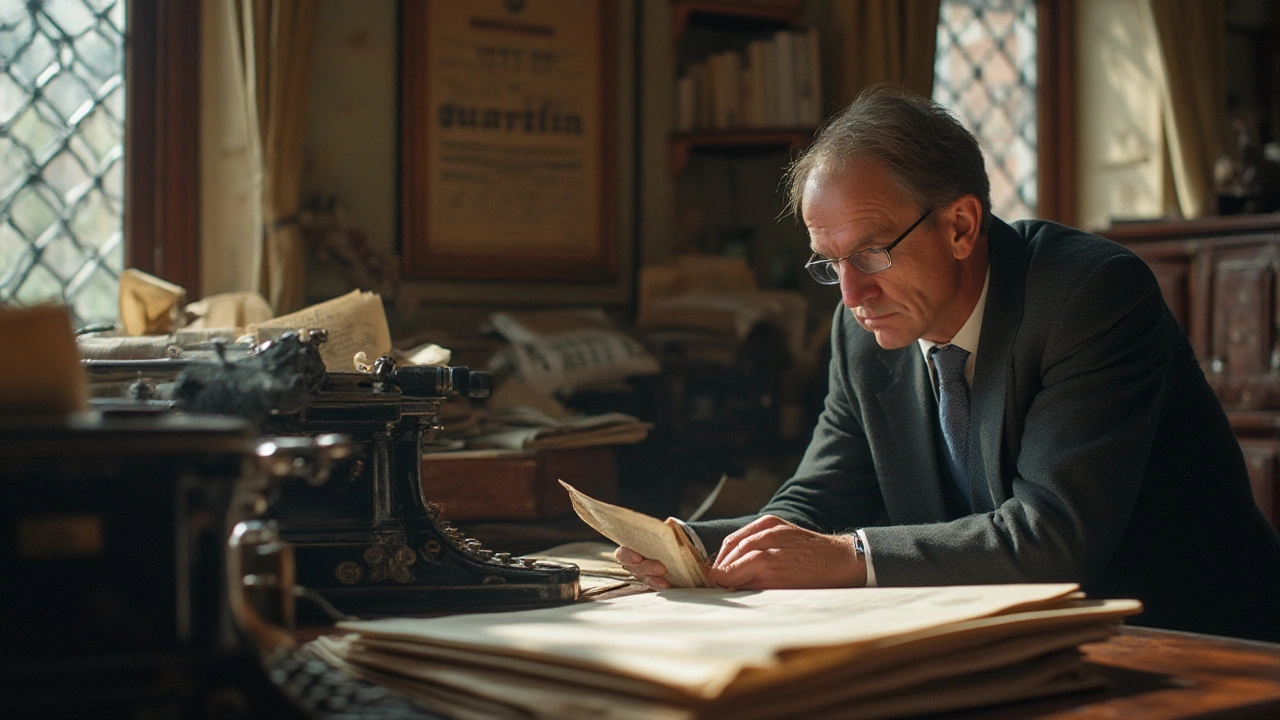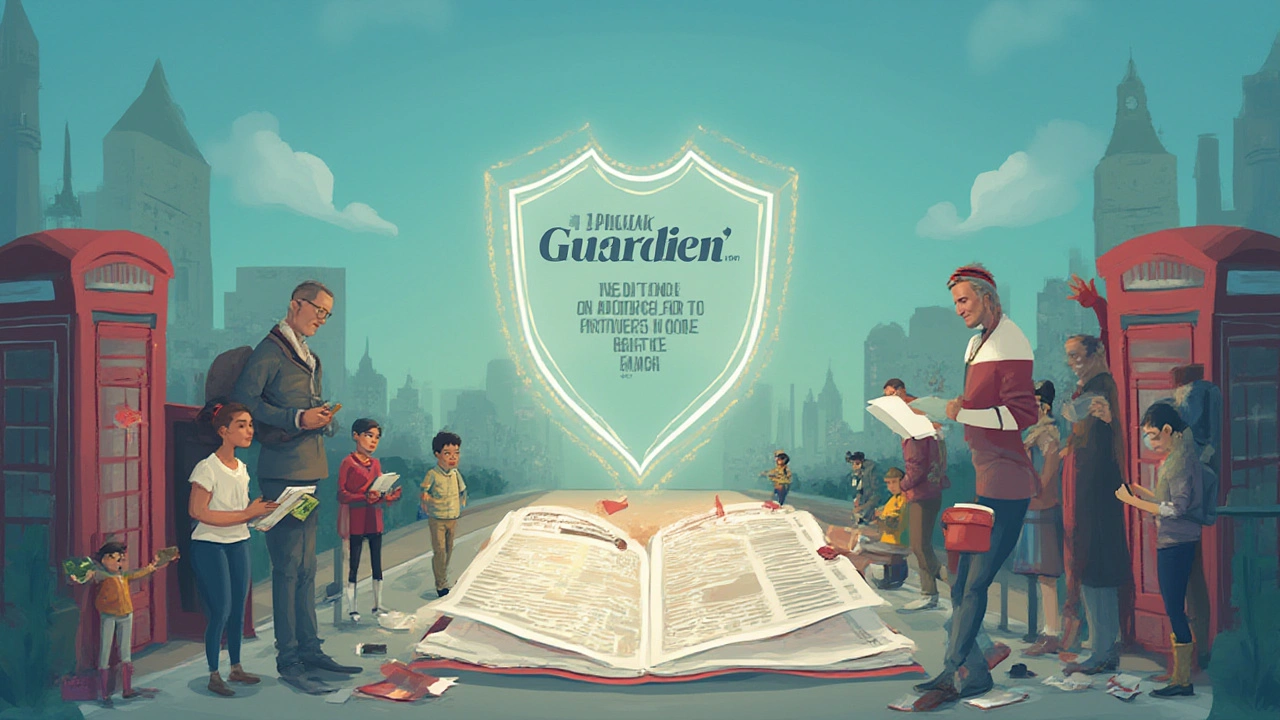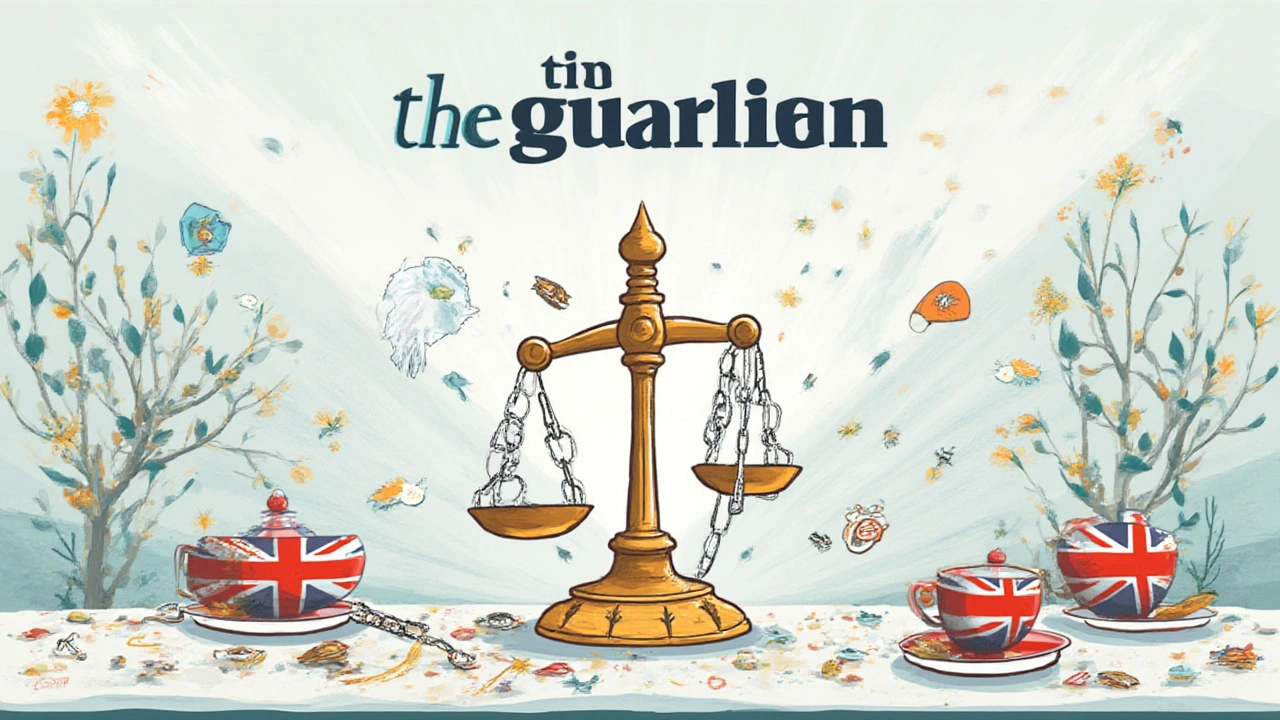
So many of us scroll through The Guardian every morning—on the tram to work, or while the kids are munching their cereal. But not everyone knows who’s actually behind this heavyweight in British media. There are plenty of wild guesses out there, from secretive billionaires to shadowy political groups. The reality is a bit more unusual, and—in a world where so much of the news gets shaped by powerful owners—it makes a difference to know where The Guardian’s words are really coming from. Let’s peel back the curtain and see who really calls the shots.
Cracking the Scott Trust: Unusual Owners for an Unusual Paper
If you ever look at the bottom of an online article and find yourself squinting at corporate logos trying to spot parent companies, The Guardian always stands out. There’s no Rupert Murdoch or Daily Mail–style dynasty behind it. Instead, The Guardian is owned by something called the Scott Trust. Now, a "trust" isn’t just a posh-sounding loophole for avoiding taxes or stashing family silver. The Scott Trust is an entity set up in 1936—nearly ninety years ago—specifically to guarantee The Guardian’s independence and editorial freedom. The idea was to shield the newspaper from both the tantrums of billionaire owners and the short-term thinking of shareholders obsessed with quarterly profits.
Back in the day, John Scott made it clear: The Guardian should exist only to report the news fairly and to serve the public good. Money, of course, mattered—journalists still need to eat—but profit was never meant to drive the paper’s values. The Trust’s setup is simple but powerful. Unlike other newspapers that get bought, sold, or run into the ground, The Guardian lives on through this trust without any private owner taking a fat dividend. Instead, surplus money gets funneled back into the newspaper—hiring reporters, keeping the lights on, and covering tough stories around the world that some competitors might avoid for fear of ruffling a rich owner’s feathers.
The trust’s structure is a rarity. If you want concrete evidence that it works, just look at the content: The Guardian is famously willing to publish controversial stories. Not many papers would stand up to governments and big business the way they did during the Snowden revelations on NSA spying in 2013. This independence isn’t just a slogan; it’s a direct result of the Scott Trust’s legal mission. Here’s a quick snapshot that sums up the ownership:
| Component | Details |
|---|---|
| Owner | The Scott Trust Limited |
| Established | 1936 |
| Number of Trust Board Members | Usually 12–14 |
| Main Asset | Guardian Media Group (GMG) |
| Key Purpose | Editorial independence and financial stability |
This ownership model isn’t frozen in time, either. The original trust was replaced in 2008 by a limited company (Scott Trust Limited) to follow financial regulations. But the mission didn’t budge: protect editorial independence above all.
One common myth is that the BBC or the British government owns The Guardian, but that’s straight-up wrong. The Trust operates independently; the board’s job is to stick closely to the original idea—never compromising the paper for money or power. If you dig through Companies House in the UK, you’ll see there are no shadowy knighthoods or silent partners involved.

Guardian Media Group: Managing Money With a Mission
Most people don’t realize The Guardian is just one part of a larger company: Guardian Media Group (GMG). GMG used to have fingers in all sorts of pies—from regional newspapers to radio and digital investments. The bulk of those have either been sold off or phased out over the past decade, with the proceeds dropped back into a fund called the Scott Trust Endowment Fund—kind of like a savings account specifically for journalism.
GMG’s operating model is brutally simple: the business arm fights to earn enough so that the journalism arm doesn’t have to worry about interference from owners or advertisers. The group’s funding relies on three things: revenue from readers (think digital subscriptions, membership, and donations), revenue from advertising (though it tries to limit its reliance on this), and income generated from invested assets.
Here’s something wild: The Guardian is the only major global news publisher committed to free access for everyone—no paywall. You don’t get nagged to buy a digital subscription just to finish an article about some council meeting in Totnes. But free doesn’t mean cheap. In 2023, GMG’s revenue sat at £267 million, with journalism spending at about £226 million. Even with reader backing, that math has pushed them to rely more on donations.
They admit it openly: They don’t always make money every year. In fact, The Guardian ran at a loss for years, kept afloat by that famous endowment fund and careful investments. In 2020, at the height of media panic about job losses, Guardian leadership revealed they had over £1 billion in reserves thanks to some clever sales, like their 2014 sale of Auto Trader shares. In the world of print, that’s like a rainy-day fund on steroids.
Anyone worried that the trust or the group is sliding toward outside influence can look at the rules. Trust members aren’t allowed to benefit personally. Even the board isn’t paid with big bonuses. Their job is to keep The Guardian on the rails—no matter who rings up and offers a suitcase of cash for a quick buyout. The group’s annual reports—even the boring 90-page bits—are clear about financial details and editorial priorities. There’s no backroom deal, just rows and rows of reader names supporting what they see as truly independent journalism.
What about political bias? Sure, The Guardian is left-leaning. But that bias isn’t forced by an owner’s pet project; it comes from decades of hiring choices and editorial principles that grew with its reader base. That’s entirely different from, say, a right-wing tabloid where every headline comes stamped with an owner’s worldview. You’ll still see fierce debate in the comment sections and, sometimes, in the stories themselves. If you want an experiment, try comparing Guardian opinion pieces with editorials from The Times or The Telegraph. Even if you disagree with The Guardian, you can’t help spotting that the voice feels more like a collective row at the kitchen table than a single rich guy’s megaphone.

Why This Ownership Model Matters for Readers and Other News Outlets
Who cares about who owns a newspaper? Turns out, readers do—whether consciously or not. With so much doubt floating around about "media bias," "fake news," and influence from moneyed interests, knowing a paper’s ownership is almost like seeing the full ingredient list before buying a loaf of bread for your kids. When Silas asks me why one paper slams the government but another just parrots official statements, it usually comes back to who’s in charge—and why.
What’s unique about The Guardian’s setup is how it shapes everything from story choice to training young journalists. Editors aren’t terrified about chasing traffic at all costs, or running clickbait, since corporate profits won’t line their own pockets. And if you’re ever wondering why The Guardian sometimes pushes uncomfortable, complex investigations—think of the Windrush scandal or years-long coverage of climate change—it’s precisely because they don’t need to beg for approval or stay in anyone’s good books. There are no "friends of the owners" to keep happy, no awkward Christmas parties where a journalist needs to sip prosecco next to a CEO who hates their reporting. The only real boss is the mission spelled out in the Trust charter.
It’s not perfect. The Guardian has weathered layoffs, complaints about editorial decisions, and even extreme cashflow crises—just like every other media company. They’ve changed business strategies, laid off staff, and had their own rows about diversity, political coverage, and who sets the agenda. But the underlying structure—ownership by a trust, not a person or profit-driven shareholders—remains stubbornly unique.
If you run through the list of big UK titles, you’ll usually find a distinct person or corporate group pulling the strings. The Daily Mail has the Rothermere family; The Sun and The Times go up the ladder to News Corp and Rupert Murdoch. The Telegraph papers were under the Barclay brothers for years, now snapped up by Abu Dhabi–listed RedBird IMI, a private investment vehicle controlled by the UAE. This sort of ownership brings its own values and interests into the newsroom—sometimes for better, sometimes for worse.
On days when newsrooms everywhere face mounting financial pressure, The Guardian’s model has pulled attention from media reformers, business schools, and rival publishers—can the trust model be copied? It’s tricky. You need era-defining founders with a willingness to walk away from profit, a loyal set of readers willing to stump up small amounts of cash, and, frankly, a pinch of luck with investment returns. But it is a system with lessons. When you’re reading a piece about strikes, war zones, or political graft, you know that it landed in your feed not because someone in a plush office wanted it there, but because an editorial team backed by an independent trust believed readers deserved to know. That’s worth looking for, whatever paper’s in your hands next.